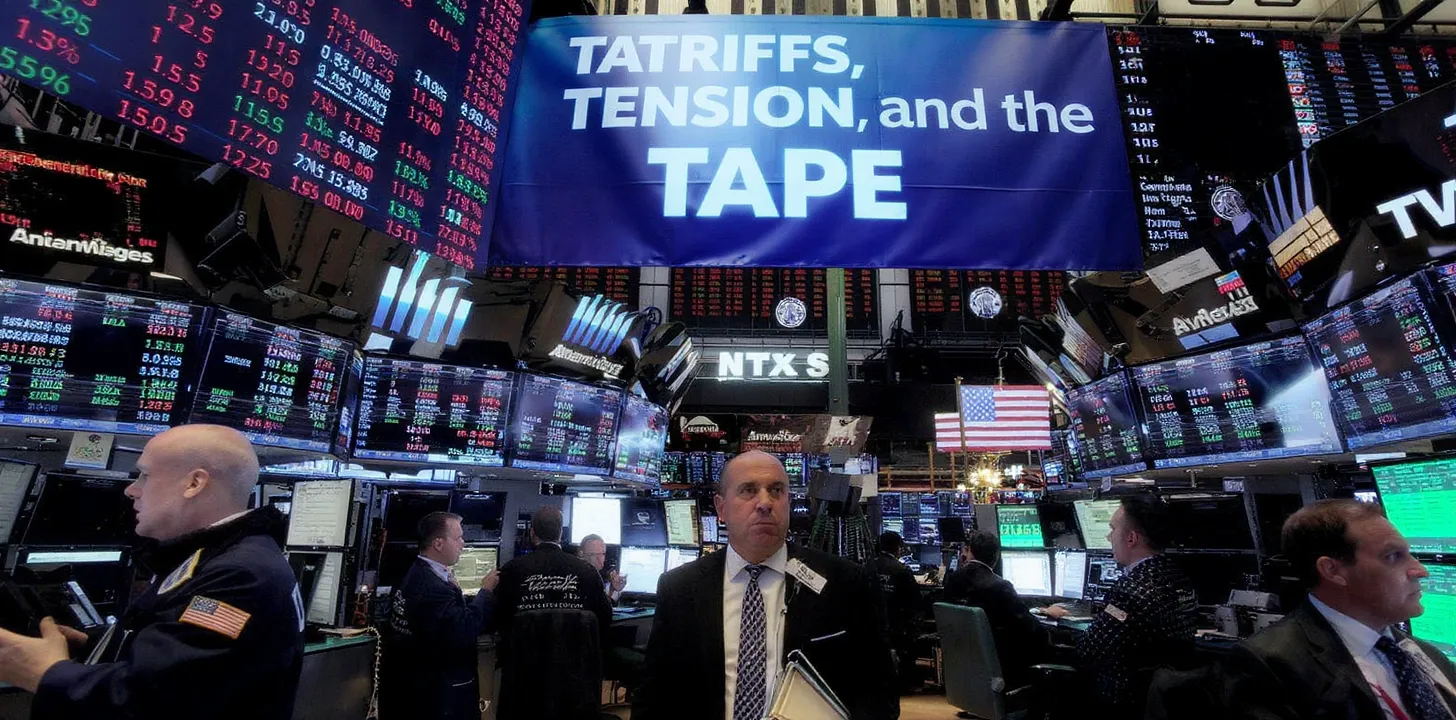Cross-Asset Pulse Check – A Fragile Expansion Tested by Tariffs, Imports, and Diverging Policy Paths
1. Executive Overview
April closed with an unnerving cocktail of negative headline prints—U.S. GDP slipped −0.3% QoQ (annualised) and ADP hiring undershot—but traders nevertheless pushed the dollar index higher, unwound curve-flatteners, and kept global equities broadly resilient. What explains the paradox? In short, the market narrative has pivoted from “growth momentum” to “relative macro-resilience.” Front-loaded imports distorted the GDP calculus, while still-healthy domestic demand and cooling core-PCE enabled investors to frame the setback as idiosyncratic rather than systemic. Month-end portfolio rebalancing flows, a stealth bid for U.S. safe assets, and a widening policy-rate advantage versus the ECB and BoJ left the greenback in pole position even as recession chatter grew louder.
2. Macro Drivers in Detail
- Import Surge / Tariffs: Imports jumped 50% annualised, dragging GDP −5pp. Seen as a temporary distortion from front-loaded trade activity.
- Core-PCE (Mar): Flat MoM and +2.3% YoY—gives the Fed breathing room and steepens the curve.
- Labour Market: ADP missed sharply (62k vs 115k est.), stoking stagflation fears ahead of Friday’s NFP.
- Fed Guidance: “Higher for longer” sustained, reinforcing USD carry advantage and hitting gold, EMFX.
- Geopolitics: Tariff escalation risks, India–Pakistan tension, Ukraine mineral pact—all raising baseline risk premia.
3. Currency Lens
- EUR/USD: Head-and-shoulders top forming. If NFP misses, expectations for Fed cuts may spike, potentially flipping EUR/USD back toward 1.20.
- USD/JPY: Trapped in 142–144. A dovish BoJ GDP tweak or low-vol risk rally could break 141.50 support.
- GBP/USD: Light IMM positioning. If tariffs pressure USD, cable could re-test the 2025 high (1.3445) assuming 10-DMA support at 1.3337 holds.
4. Fixed-Income & Curve Dynamics
2s–10s steepened to +51 bp, reflecting delayed Fed cuts. The SOFR–Euribor spread tightened, highlighting relative U.S. policy risk. Credit spreads widened modestly, but liquidity remains robust.
5. Commodities & Alternatives
Oil dropped 3.6% after Saudi comments. Gold fell to $3,228 as real yields steadied. Copper slid 5% on China concerns. Iron ore is the next test—watch AUD/USD for reversal if futures crack.
6. Breadth & Risk Metrics
S&P 500 reversed a 2.3% plunge intraday. Market breadth deteriorated (adv/decl = 0.65), but 7 of 11 sectors closed green. VIX held under 15, suggesting dealer option supply kept vol contained. EUR/USD options skewed bearish.
7. Scenario Outlook
- Soft NFP + benign CPI: Curve bull-steepens, USD dips, gold rebounds >$3,300.
- Tariff escalation at G7: Repeats Q1 import distortion, pressures AUD/CAD, and revives recession trades.
- BoJ surprise hike: USD/JPY breaks 140, Nikkei unwinds gains, risk-off impulse returns.
8. Key Risks & Portfolio Takeaways
- GDP drag misread—Q2 rebound may disappoint if import “payback” stalls.
- Tariff-driven re-inflation—Core goods CPI could breach 3% again by summer.
- Liquidity vacuum—Post-debt-ceiling cut to Treasury bill supply could stress USD funding.
Bottom Line: The cross-asset landscape signals fragility beneath relative strength. Strategic hedging with USD vol, selective equity defensives, and tactical gold exposure offers a durable setup as policy and data clarity emerges.



